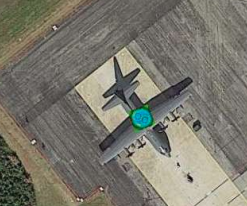Governments around the world are increasingly investing in autonomous military systems. Many are already developing programs and technologies that they hope will give them an edge over their adversaries.
AI in Warfare
Target Systems Analysis (TSA) and Target Audience Analysis (TAA) are intelligence-related methods to develop a deep understanding of potential areas for operations. Detection of military assets on the ground can be performed by applying deep learning-based object detectors on drone surveillance footage. For military forces on the ground, the challenge is to conceal their presence as much as possible from discovery from the air. A common way of hiding military assets from sight is camouflage, for example, by using camouflage nets.
Algorithmic Targeting: Today autonomous weapon platforms are using computer vision to identify, track targets, and shoot targets. These algorithmic targeting technologies are nowadays so precise, that even the military adds randomness to the targeting process to spread the bullets over the target. Otherwise, the bullet would just fly through the already generated holes.
Problem
These previously mentioned AI systems outperform human experts dramatically. But there are still major issues with these technologies. These systems are vulnerable to adversarial noise. You can imagine this (adversarial) noise as blurry pixels on your Instagram photos, usually, these pixel perturbations are so small that none of your human followers will see them but when Instagram uses an image classification software to check your account for illegal posts, it could happen (in the WORST CASE) that Instagram will block you.
Manipulating these AI systems
So what can you do when you forgot your camouflage net or when you don’t want a huge hole in your battleship? Well, you could try to generate this previously mentioned adversarial noise and stick it on your battleship or airplane. So from the point of mobility, it would be much easier to print a specific pattern on top of your battleship to hide from adversarial drones as carrying camouflage nets.

Summary
In this post, I wanted to describe the current weaknesses of AI systems, especially in warfare. The biggest problem of the current AI technology is (not only in warfare), that they are quite vulnerable against (adversarial) noise. This should be considered before releasing fully autonomous war machines that could make huge damage because of perturbated pixels in input data.